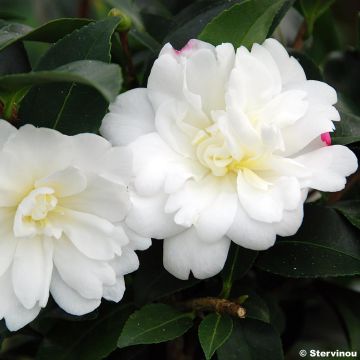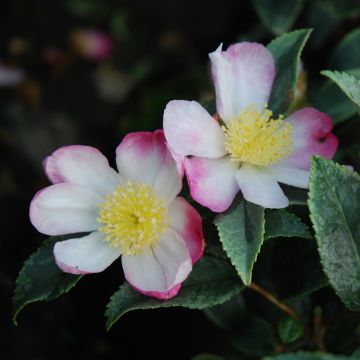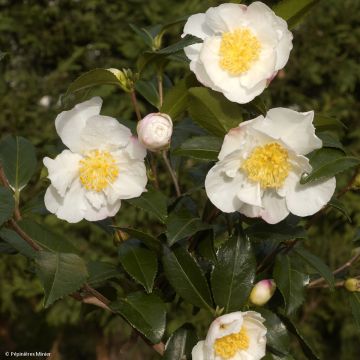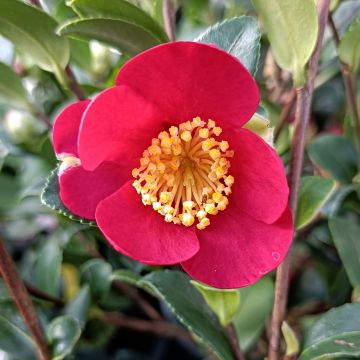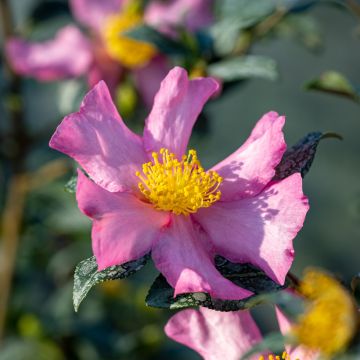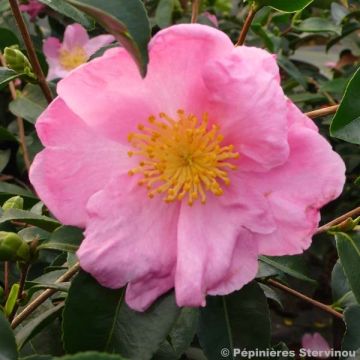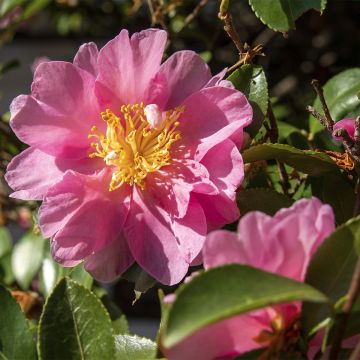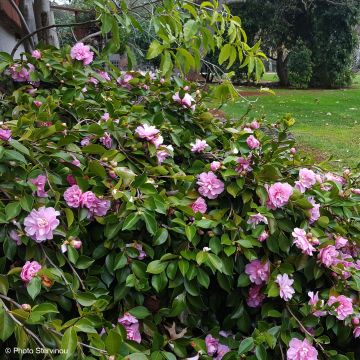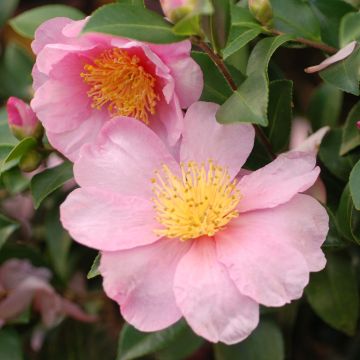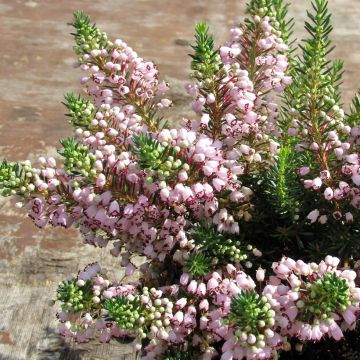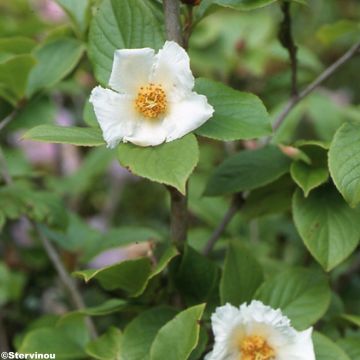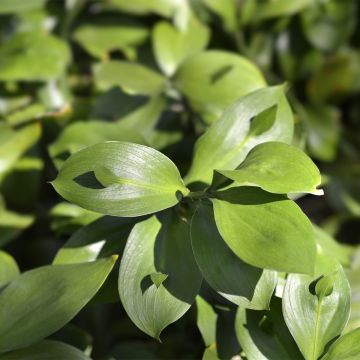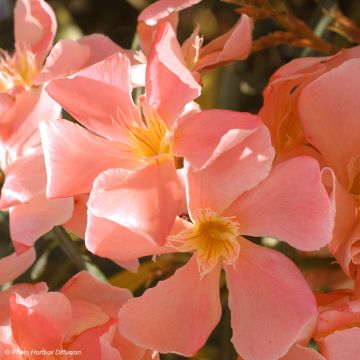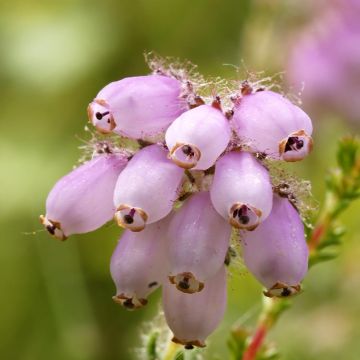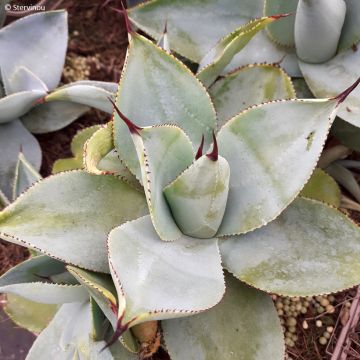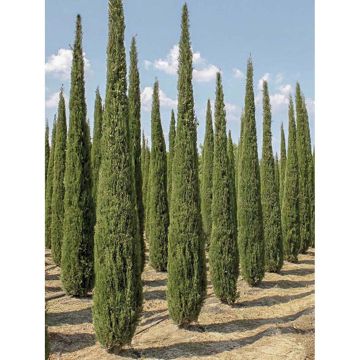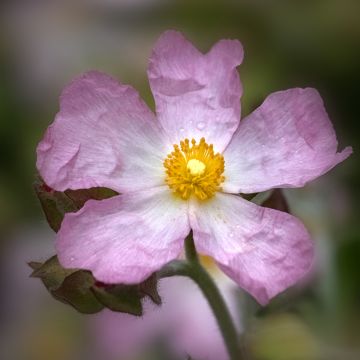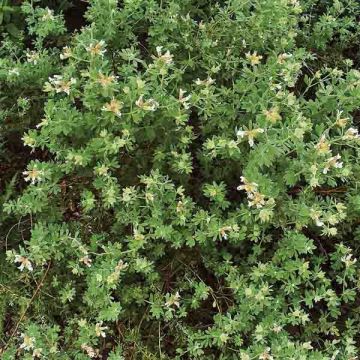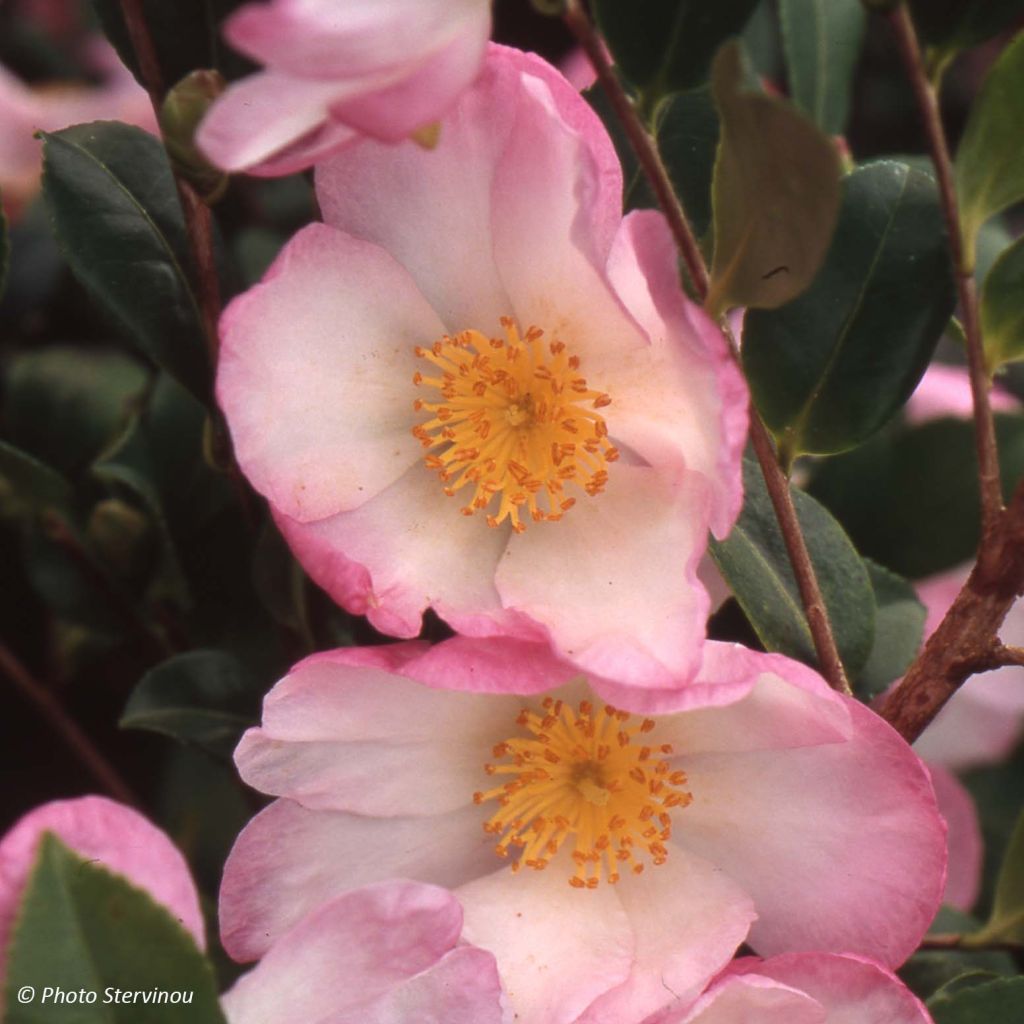

Camélia d'automne Versicolor - Camellia sasanqua
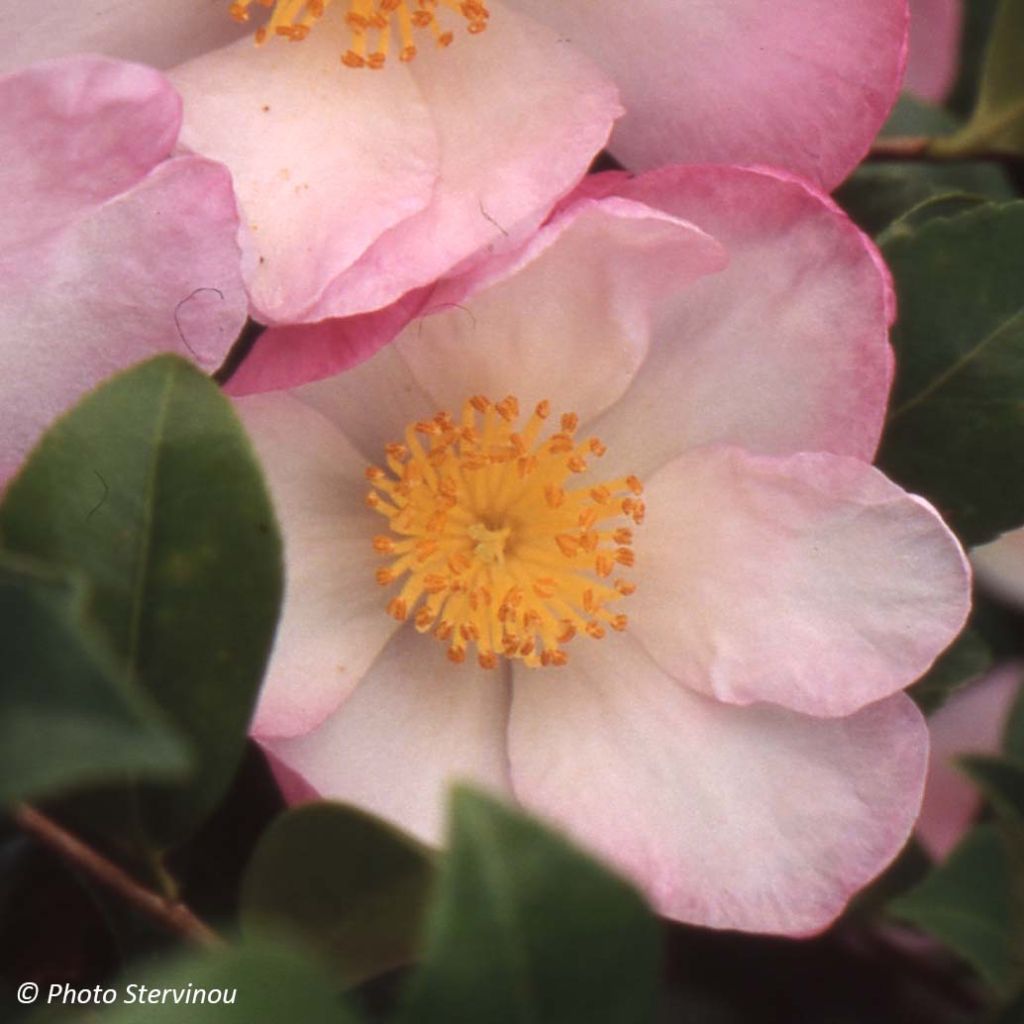

Camélia d'automne Versicolor - Camellia sasanqua
Camellia sasanqua Versicolor
Camellia sasanqua Versicolor
Autumn Camellia, Christmas Camellia
Planted in a large pot at the beginning of November, the young plant has been flowering since the end of November until now. Revised text: Planted in a large pot at the beginning of November, the young plant has been flowering since the end of November until now.
Odile, 05/01/2024
This item cannot be shipped to the selected country
Delivery charge from €5.90
More information
Schedule delivery date,
and select date in basket
This plant carries a 24 months recovery warranty
More information
We guarantee the quality of our plants for a full growing cycle, and will replace at our expense any plant that fails to recover under normal climatic and planting conditions.
From €5.90 for pickup delivery and €6.90 for home delivery
Express home delivery from €8.90.

Does this plant fit my garden?
Set up your Plantfit profile →
Description
Camellia sasanqua 'Versicolor' is an absolutely delightful variety of autumn camellia. This bush distinguishes itself from the typical species with its white flowers beautifully edged in lavender pink and edged in bright pink, but also with the powerful and sweet fragrance of its blooms. With a very compact upright habit, it carries throughout the year extremely dark foliage, almost black in colour, with a matte finish. It is hardy and capable of adapting to windy or sunny situations, however it requires a soil that is cool in summer and free of limestone. A marvel, to be installed in a beautiful ceramic pot on the terrace, or near the house to enjoy every time you pass by.
Obtained in 1940 by K. Sawada in the USA, the Camellia sasanqua Versicolor was introduced in France in the 1950s. It belongs, like all camellias, to the family of Theaceae and has given rise to many highly fragrant cultivars. With rather fast growth it forms a bush with a flexible but upright habit, compact, reaching 1 m (3 ft) to 1.20 m (4 ft) in height and 80 to 90 cm (35 in) in width in 10 years. The foliage is remarkable: dense and evergreen, it is composed of small leaves tinted mahogany at budburst, whose colour quickly evolves to such a dark green that they appear almost black against the light. They are ovate and leathery, finely toothed along the edges.
Its remarkably long flowering extends from October to December, sometimes until February in mild climates. Initially round pink buds appear, followed by bicoloured flowers, 4 to 5 cm (2 in) in diameter, single, resembling those of Japanese anemones: a corolla of 5 to 7 irregularly edged white petals, with a bright pink underside, surrounding a heart of golden yellow stamens that reveal themselves late. The flowers are highly fragrant and ephemeral, but continuously renew on the plant, leaving a carpet of petals on the ground like cherry trees in Japan. Their fragrance evokes that of jasmine tea, with hints of plum. This camellia is hardy down to -12°C (10.4 °F).
Camellia sasanqua 'Versicolor', just like its Japanese parent, tolerates the sun and windy conditions much better than other camellias. Its habit is more flexible, its appearance more natural, and its flowering is infinitely delicate. It performs better in mild climates than in cold regions, where its hardiness is sometimes insufficient and its flowering destroyed. Wherever winter is not too harsh it can be installed as a standalone specimen in the garden, or combined with other ericaceous plants (Rhododendron, deciduous azaleas, Hydrangea, Hamamelis), in a flowering hedge. The Camellia 'Versicolor' deserves a prime location close to the house, at the entrance of the garden or alongside a path. You can also adorn its base with autumn bulbs such as colchicums or cyclamen. In cold regions it can be placed on a balcony or terrace, to be brought inside a veranda or cold greenhouse during its flowering period. If necessary it can be protected from the cold inside the (minimally heated) house, provided its foliage is regularly misted and it is watered with non-calcereous water.
Report an error about the product description
Camellia sasanqua Versicolor in pictures
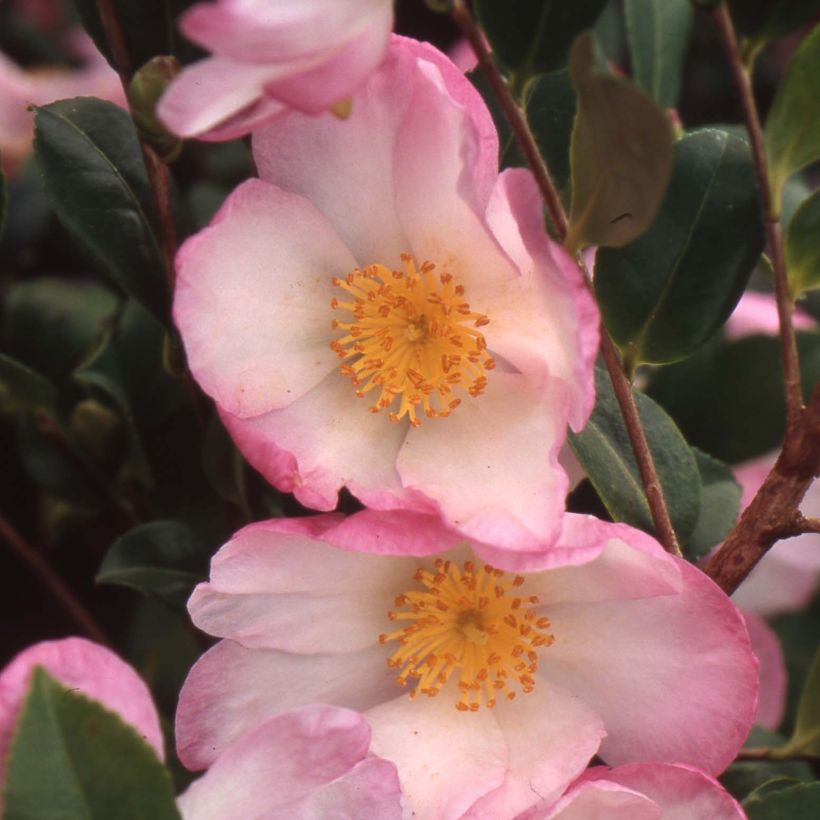

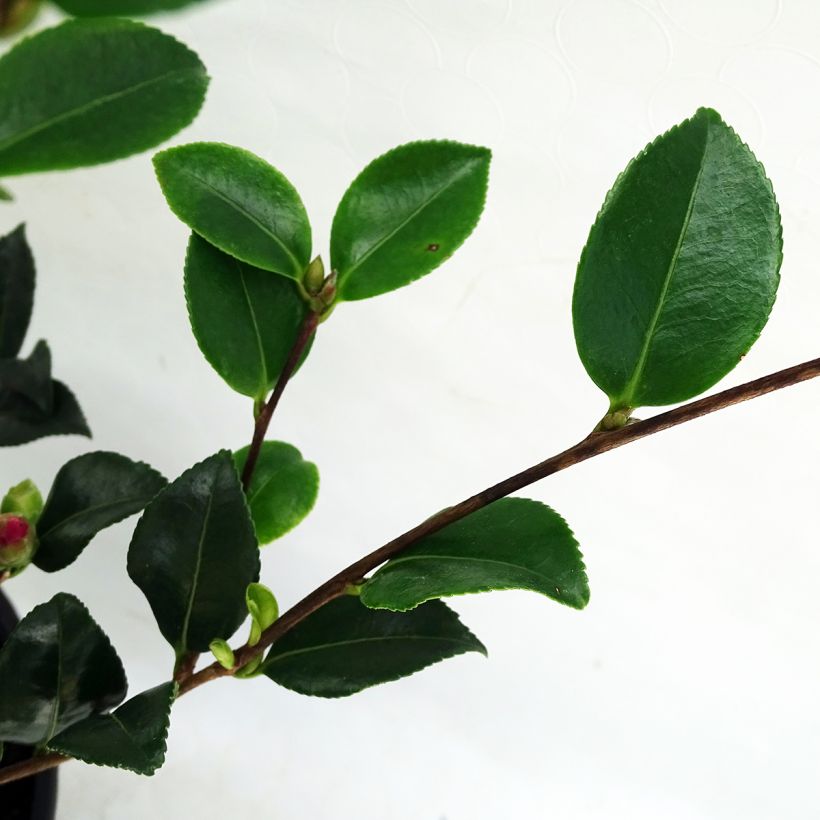

Plant habit
Flowering
Foliage
Botanical data
Camellia
sasanqua
Versicolor
Theaceae
Autumn Camellia, Christmas Camellia
Cultivar or hybrid
Other Autumn Camellia
Planting and care
Camellia sasanqua can be placed in a fairly shady spot, sheltered from cold and drying winds. It can be grown in non-scorching sunlight, but the roots must remain cool. Plant it in deep, moist, humus-rich, acidic, and well-drained soil. Do not plant the bush too deeply; the top of the root ball should be covered with 3 cm (1.2 in) of soil. In winter cover it with a 5 to 7 cm (2 to 3 in) thick mulch composed of leaf compost and crushed bark. Beware of late frosts that can damage the flowers and buds. Water during dry periods to prevent the bush dropping its flower buds. Pruning should be done every year after flowering. Lightly trim any stems that prevent the bush from maintaining its compact habit. Remove faded flowers if you do not want fruits and remove dead shoots. The mature Camellia can withstand hard pruning. Camellia sasanqua can be susceptible to root rot, leaf spots, and viruses. It can be attacked by aphids and scale insects that cause sooty mould, as well as by weevils.
Planting period
Intended location
Care
-
, onOrder confirmed
Reply from on Promesse de fleurs
Evergreen shrubs
Haven't found what you were looking for?
Hardiness is the lowest winter temperature a plant can endure without suffering serious damage or even dying. However, hardiness is affected by location (a sheltered area, such as a patio), protection (winter cover) and soil type (hardiness is improved by well-drained soil).

Photo Sharing Terms & Conditions
In order to encourage gardeners to interact and share their experiences, Promesse de fleurs offers various media enabling content to be uploaded onto its Site - in particular via the ‘Photo sharing’ module.
The User agrees to refrain from:
- Posting any content that is illegal, prejudicial, insulting, racist, inciteful to hatred, revisionist, contrary to public decency, that infringes on privacy or on the privacy rights of third parties, in particular the publicity rights of persons and goods, intellectual property rights, or the right to privacy.
- Submitting content on behalf of a third party;
- Impersonate the identity of a third party and/or publish any personal information about a third party;
In general, the User undertakes to refrain from any unethical behaviour.
All Content (in particular text, comments, files, images, photos, videos, creative works, etc.), which may be subject to property or intellectual property rights, image or other private rights, shall remain the property of the User, subject to the limited rights granted by the terms of the licence granted by Promesse de fleurs as stated below. Users are at liberty to publish or not to publish such Content on the Site, notably via the ‘Photo Sharing’ facility, and accept that this Content shall be made public and freely accessible, notably on the Internet.
Users further acknowledge, undertake to have ,and guarantee that they hold all necessary rights and permissions to publish such material on the Site, in particular with regard to the legislation in force pertaining to any privacy, property, intellectual property, image, or contractual rights, or rights of any other nature. By publishing such Content on the Site, Users acknowledge accepting full liability as publishers of the Content within the meaning of the law, and grant Promesse de fleurs, free of charge, an inclusive, worldwide licence for the said Content for the entire duration of its publication, including all reproduction, representation, up/downloading, displaying, performing, transmission, and storage rights.
Users also grant permission for their name to be linked to the Content and accept that this link may not always be made available.
By engaging in posting material, Users consent to their Content becoming automatically accessible on the Internet, in particular on other sites and/or blogs and/or web pages of the Promesse de fleurs site, including in particular social pages and the Promesse de fleurs catalogue.
Users may secure the removal of entrusted content free of charge by issuing a simple request via our contact form.
The flowering period indicated on our website applies to countries and regions located in USDA zone 8 (France, the United Kingdom, Ireland, the Netherlands, etc.)
It will vary according to where you live:
- In zones 9 to 10 (Italy, Spain, Greece, etc.), flowering will occur about 2 to 4 weeks earlier.
- In zones 6 to 7 (Germany, Poland, Slovenia, and lower mountainous regions), flowering will be delayed by 2 to 3 weeks.
- In zone 5 (Central Europe, Scandinavia), blooming will be delayed by 3 to 5 weeks.
In temperate climates, pruning of spring-flowering shrubs (forsythia, spireas, etc.) should be done just after flowering.
Pruning of summer-flowering shrubs (Indian Lilac, Perovskia, etc.) can be done in winter or spring.
In cold regions as well as with frost-sensitive plants, avoid pruning too early when severe frosts may still occur.
The planting period indicated on our website applies to countries and regions located in USDA zone 8 (France, United Kingdom, Ireland, Netherlands).
It will vary according to where you live:
- In Mediterranean zones (Marseille, Madrid, Milan, etc.), autumn and winter are the best planting periods.
- In continental zones (Strasbourg, Munich, Vienna, etc.), delay planting by 2 to 3 weeks in spring and bring it forward by 2 to 4 weeks in autumn.
- In mountainous regions (the Alps, Pyrenees, Carpathians, etc.), it is best to plant in late spring (May-June) or late summer (August-September).
The harvesting period indicated on our website applies to countries and regions in USDA zone 8 (France, England, Ireland, the Netherlands).
In colder areas (Scandinavia, Poland, Austria...) fruit and vegetable harvests are likely to be delayed by 3-4 weeks.
In warmer areas (Italy, Spain, Greece, etc.), harvesting will probably take place earlier, depending on weather conditions.
The sowing periods indicated on our website apply to countries and regions within USDA Zone 8 (France, UK, Ireland, Netherlands).
In colder areas (Scandinavia, Poland, Austria...), delay any outdoor sowing by 3-4 weeks, or sow under glass.
In warmer climes (Italy, Spain, Greece, etc.), bring outdoor sowing forward by a few weeks.

































